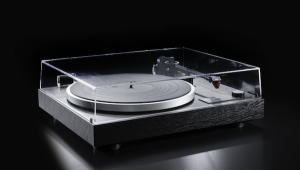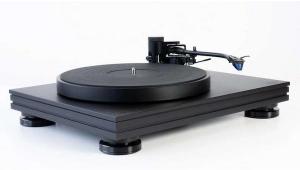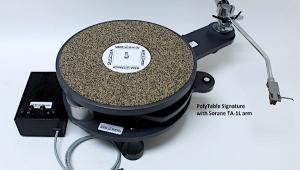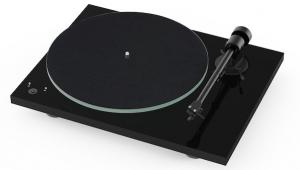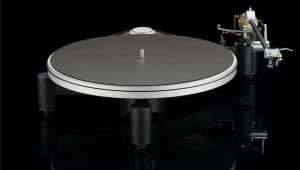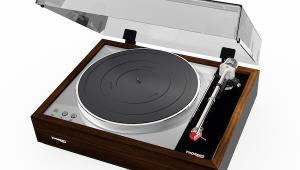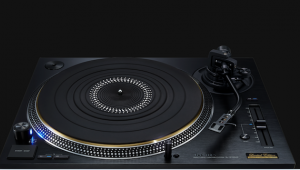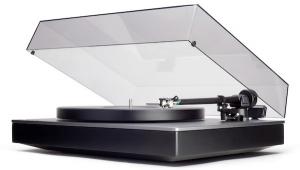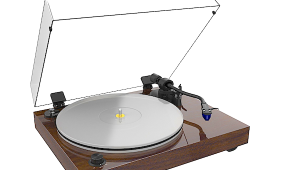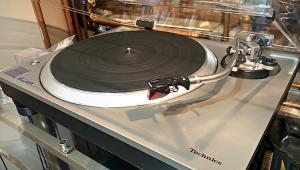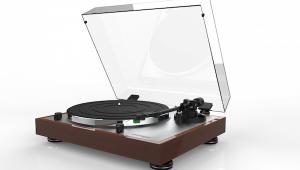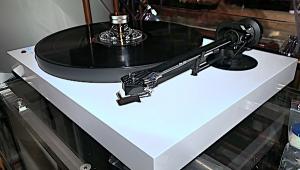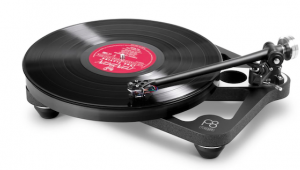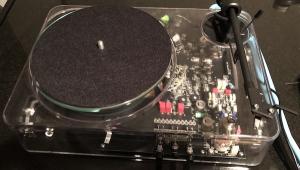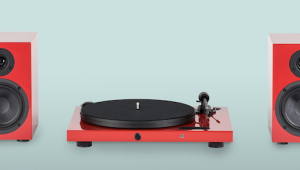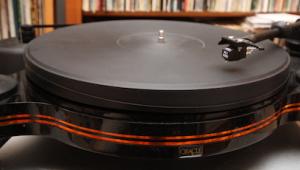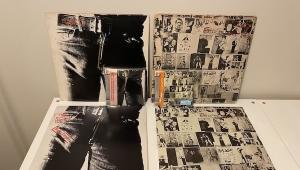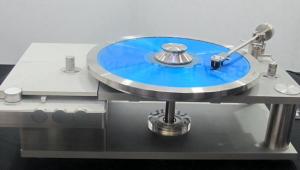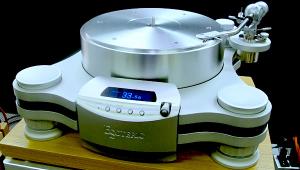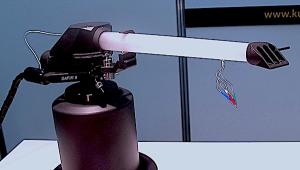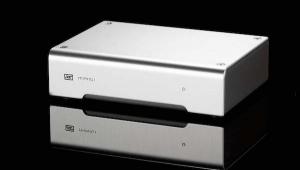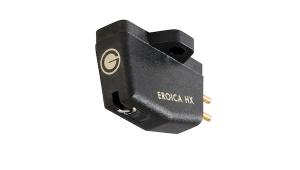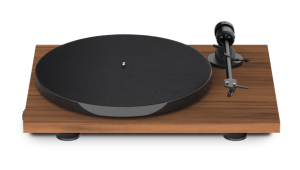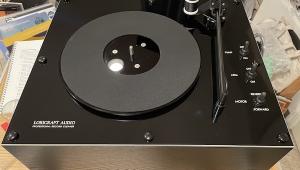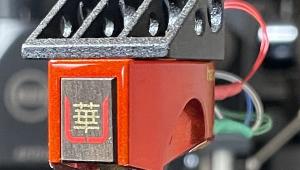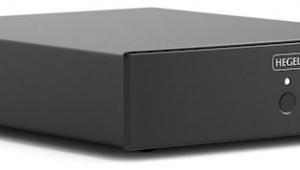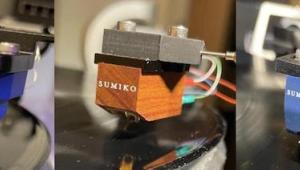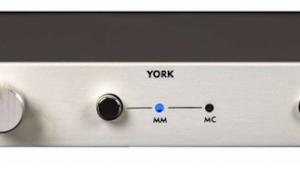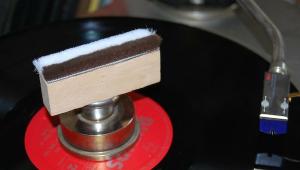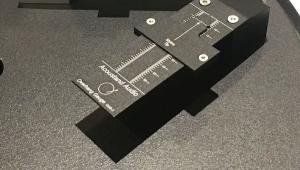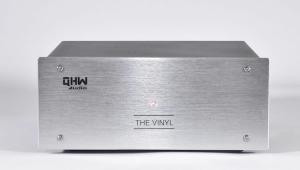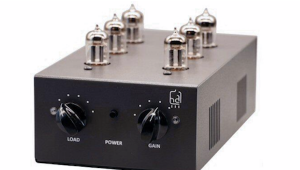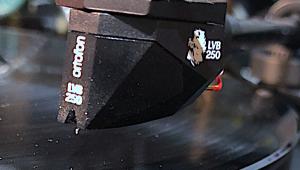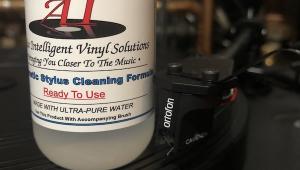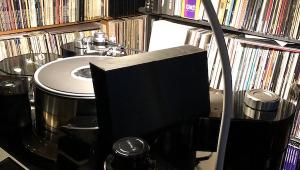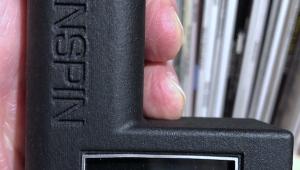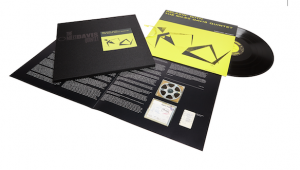Oracle Delphi Mk.VI turntable

In its three decades the Delphi has undergone many upgrades both technical and aesthetic. Not surprisingly, so has the price. The Mk.II Delphi sold for $1250 in 1986; the Delphi Mk.VI with Turbo power supply and dedicated power cord now sells for $8500, which, in today's market, I think is reasonable for what you get. The review sample came with an Oracle/SME 345 tonearm ($3100) and a Benz-Micro Thalia high-output MC cartridge ($1700), for a total cost of $13,300—or $11,600 for just 'table and arm.
Born beautiful, the Delphi has become only more so—the fit and finish of the Mk.VI are flawless. The aluminum surfaces, coated in high-gloss polyester, gleam brightly and are smooth under the fingers. You'll like looking at and touching it.
But the Delphi has also had many technical difficulties, beginning with the offset weight of the tonearm, which, in earlier models, made it difficult to get the three-point spring-based suspension to behave pistonically. LA retailer Brooks Berdan elegantly solved that problem with a modification consisting of a U-shaped weight affixed to the underside of the chassis opposite the arm-mount ring. Oracle eventually included a similar feature in their design. While a spring still constitutes the main suspension component, each of the Mk.VI's three suspension towers includes more than a half-dozen elements, including parts made from felt, Sorbothane, rubber, and Delrin.
Oracle has made a series of changes to the basic design over the years to, among others, the motor (formerly DC, now AC synchronous), the power supply, the subchassis (it's now more massive), the arm mount (an aluminum sandwich now replaces the original acrylic wafer), a heavier platter (though still of aluminum), the bearing (it's now wider), and the integral polymer mat).
The Mk.VI's aluminum subchassis is the most massive yet; it's thicker, and, to improve resonance control, has been redesigned to shorten the arms that extend to the three posts from which it's suspended. Oracle has also widened, by about 35%, the width of the support for the tonearm mounting ring, thus increasing the rigidity of the mount system.
The Mk.VI's spindle bearing retains the Mk.V's contact system, wherein six nylon-tipped setscrews protrude through the bearing housing to contact the spindle. Each platter spindle and housing must therefore be individually calibrated as a system. In the Mk.VI, Oracle has changed the screws to a material less sensitive to variations in temperature, thus making possible greater accuracy and tighter tolerances. The thrust pad is of a new polyamide-imide plastic said to have the greatest strength and stiffness of any thermoplastic made. This is claimed to increase resistance to wear and decrease rotational noise.
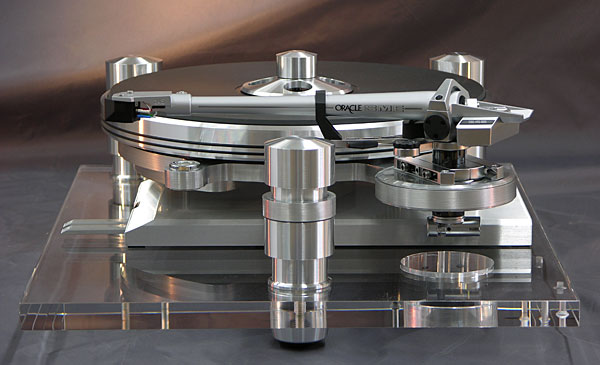
The Delphi Mk.VI includes a few other minor tweaks, but the greatest improvement Oracle has made to the Mk.VI, and probably to any iteration of the Delphi—an improvement claimed by Oracle and easily audible to me—is the new Micro Vibration Stabilizer System. In essence, this adds shock absorbers to the spring suspension system. The system consists of a cup, half-filled with silicone fluid of extremely low viscosity, located next to each of the three suspension towers. A lockable Delrin plunger, threaded and tapered, is attached to the subchassis bottom directly above each cup. This can supply very precise amounts of damping, depending on how deeply into the fluid the plunger is . . . plunged.
While a properly designed, spring-suspended subchassis can do an outstanding job of isolating the turntable from floorborne vibrations—and, to some degree, airborne ones as well—it creates its own problems. No matter how well machined the platter and bearing, some amount of wobble will be produced when they rotate. This can set the spring suspension in micromotion, producing lateral displacements that can vary the distance between the platter and motor pulley, and thus affect the stability of the platter's speed of rotation. In a spring-suspended system, such lateral and/or vertical microdisplacements can also result when an LP with an off-center hole causes the tonearm to make otherwise unnecessary lateral movements. In addition, the microvibrations created by the stylus tracing the groove modulations travel in two directions: down into the platter and subchassis, as well as up into the tonearm, by which means they can even reach the arm bearing. If there's play in that bearing, those vibrations can travel back along the tonearm to return to the stylus.
